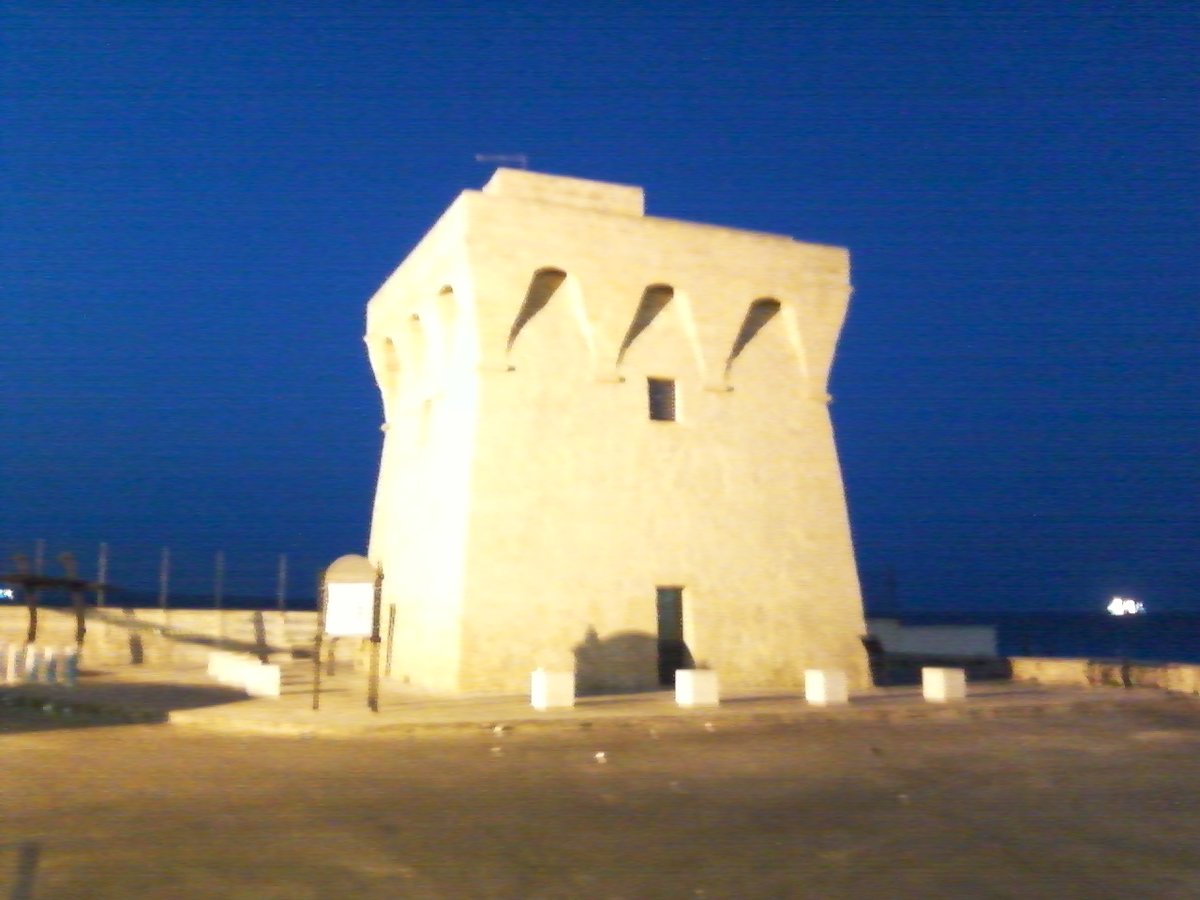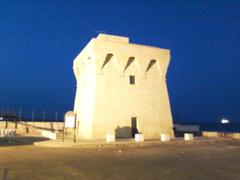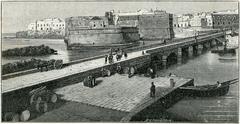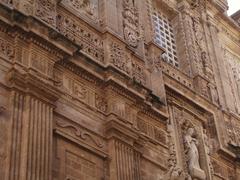
Visiting Torre San Giovanni della Pedata: Hours, Tickets, History, and Tips
Date: 01/08/2024
Introduction
Discover the fascinating history and stunning architecture of Torre San Giovanni della Pedata in Gallipoli, Italy. Whether you’re a history buff or just looking for a picturesque spot by the sea, this guide covers everything you need to know for your visit. Torre San Giovanni della Pedata is one of the coastal watchtowers that dot the landscape of Apulia, constructed primarily during the 16th and early 17th centuries as a defensive measure against frequent incursions by Ottoman Turks and pirates (torricostieredelsalento.com). Built with regular stone blocks and featuring a truncated pyramidal base, the tower is a testament to the engineering prowess of the time (it.wikipedia.org). Its significant role in the network of visual communication among coastal fortifications highlights its strategic importance in the region’s history (gallipolinelsalento.it). Today, it stands not only as a historical monument but also serves as a marine biology station, showcasing its adaptation to contemporary needs (torricostieredelsalento.com).
Table of Contents
- Introduction
- History of Torre San Giovanni della Pedata
- Visitor Information
- Travel Tips
- Frequently Asked Questions
- Conclusion
History of Torre San Giovanni della Pedata
Origins and Construction
Torre San Giovanni della Pedata, located in the Lido San Giovanni area of Gallipoli, Italy, was constructed in the early 17th century. The decision to build the tower was made in 1582, but due to financial constraints, its construction was delayed until 1608 (torricostieredelsalento.com). The tower was part of a broader defensive strategy implemented by Charles V in the 16th century to protect the coastal areas from frequent Saracen incursions (gallipolinelsalento.it).
Architectural Features
The tower is built with regular stone blocks and features a truncated pyramidal base that transitions into a square plan at the top. Each side of the tower’s summit is equipped with three machicolations, which were used for defensive purposes. The interior of the tower is divided into two floors, connected by a wall staircase, and access is granted through a small door (it.wikipedia.org).
Strategic Importance
Torre San Giovanni della Pedata was strategically positioned to communicate with other coastal fortifications. To the north, it connected visually with the southern defenses of Gallipoli, and to the south, it communicated with Torre Pizzo (torricostieredelsalento.com). This network of towers was crucial for early warning and defense against pirate attacks, ensuring the safety of the coastal communities.
Historical Records and Military Use
Historical documents provide detailed accounts of the tower’s role and the personnel assigned to it. For instance, a military report from the 18th century mentions that the tower and the adjacent beach were patrolled by “Cavallari ordinari e straordinari” (regular and extraordinary cavalrymen) paid by the University of Gallipoli (torricostieredelsalento.com). In 1730, the tower was guarded by Corporal Basso Giovanni and his companion, Giuseppe Pellegrino (gallipolinelsalento.it).
Decline and Restoration
By 1825, records indicate that Torre San Giovanni della Pedata was already in a state of disrepair, and by 1842, it had been abandoned (gallipolinelsalento.it). Despite its decline, the tower underwent several restorations over the years to preserve its historical significance. Today, it stands as a testament to the region’s rich history and serves as a marine biology station (torricostieredelsalento.com).
Etymology and Cultural Significance
The name “San Giovanni” likely originates from an ancient chapel or devotional edifice in the area, although the exact reason for the term “Pedata” remains unclear (gallipolinelsalento.it). The tower’s historical and cultural significance is further highlighted by its inclusion in various historical atlases and documents, such as Mario Cartaro’s 1613 manuscript atlas and the Bari atlas, although it is notably absent from the Atlante dei Magini (torricostieredelsalento.com).
Modern Context
Today, Torre San Giovanni della Pedata is surrounded by modern buildings, which have somewhat diminished its historical ambiance. However, it remains a popular attraction for tourists visiting Lido San Giovanni, who often explore the tower and enjoy the nearby Ionian Sea (gallipolinelsalento.it). The tower’s current use as a marine biology station underscores its continued relevance and adaptation to contemporary needs (it.wikipedia.org).
Visitor Information
- Visiting Hours: The tower is open from 9 AM to 6 PM daily.
- Ticket Prices: Tickets can be purchased at the entrance for €5 per adult and €3 per child.
- Accessibility: The tower is partially accessible to visitors with disabilities, with ramps available at the entrance.
Travel Tips
- Best Times to Visit: The best time to visit is during the summer months, from June to September.
- What to Bring: Lightweight clothing, sun protection, and comfortable walking shoes.
- Nearby Attractions: Gallipoli Historic Center, other coastal watchtowers like Torre Suda and Torre del Pizzo.
Frequently Asked Questions
- What are the visiting hours for Torre San Giovanni della Pedata?
- The tower is open daily from 9 AM to 6 PM.
- How much does it cost to visit Torre San Giovanni della Pedata?
- Tickets are €5 for adults and €3 for children.
- Are guided tours available?
- Yes, guided tours are available every weekend for an additional €10 per person.
Conclusion
Torre San Giovanni della Pedata’s rich history, architectural features, and strategic importance make it a significant landmark in Gallipoli. Plan your visit today to explore this historical landmark and enjoy the natural beauty of the surrounding area. Don’t forget to download our mobile app Audiala for more travel tips and updates!
References
- Torricostieredelsalento.com, n.d., Torre San Giovanni della Pedata torricostieredelsalento.com
- Gallipolinelsalento.it, n.d., Torre San Giovanni della Pedata gallipolinelsalento.it
- Wikipedia, n.d., Torre San Giovanni della Pedata it.wikipedia.org



